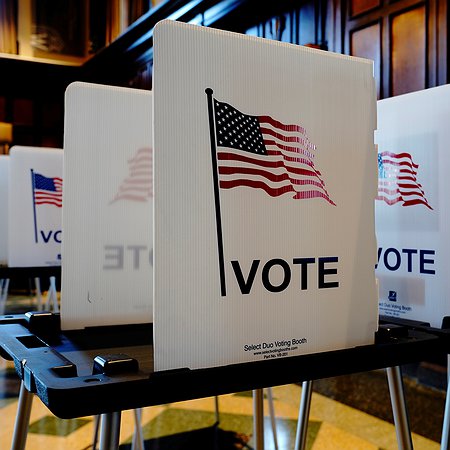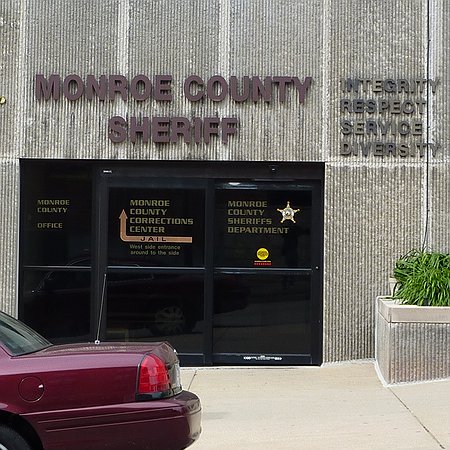Manhattan Institute Report Cherry-Picks Data to Criticize Discovery Reform
A recent report falsely claims that discovery reform laws have hamstrung New York’s criminal legal system. The Manhattan Institute’s report relies on flawed data and problematic assumptions to attempt to tie discovery reform to increases in crime in New York.
The Briefing

A recent report falsely claims that discovery reform laws have hamstrung New York’s criminal legal system. The Manhattan Institute’s report relies on flawed data and problematic assumptions to attempt to tie discovery reform to increases in crime in New York. In reality, the dataset cited by the report points to the fact that discovery reform is working as intended.
Discovery reform did not create unjust outcomes
The Manhattan Institute cherry-picks data to falsely claim that discovery reforms create unjust outcomes within the criminal legal system. It cites data about the difference in dismissal rates between from 2019 to 2021, meaning, in its view, that discovery reform and speedy trial rules have created a “compliance burden” for prosecutors.
The data indicate that more low-level cases are being dismissed, yet the data does not make clear the reason for this change in dismissal rate. What is clear is that when prosecutors care about a case, like an indicted felony, they are able to provide discovery and move forward with prosecuting the case. The dismissal rate for indicted felonies in 2021 is almost identical to the 2019 number; the new discovery laws did not cause more indicted felonies to be dismissed in 2021 compared to the period before the new laws. Meanwhile, the rate of dismissals among all disposed cases – including cases that are felonies, misdemeanors and simple violations – is higher, but the total number of dismissals for disposed cases is lower, indicating that lower-level cases made up the vast majority of cases that were dismissed in 2021 but prosecuted in 2019.
Discovery reform has caused prosecutors to take a long-needed look at the types of cases they prosecute. The reforms made New York’s discovery consistent with many jurisdictions across the country in requiring “open file discovery,” meaning that the defendant is able to see the evidence in the possession of the prosecution or police, unless that information should be protected for some reason. The laws did not create a burden to seek out any information, documents, or evidence that is not in the control of law enforcement in the vast majority of cases. In other words, in the vast majority of cases, the new laws only require a prosecutor to look at their own file and coordinate with the police department who made the arrest. Prosecutors are now choosing to dismiss petty offenses instead of taking simple steps to work with police.
Prior to discovery reform, prosecutors could allow the low-level cases to sit in the system, without an opportunity for people to see the full range of evidence being used against them. This waiting period was used as leverage to extract plea deals from people facing criminal charges. The conclusion should be that those cases should not have been prosecuted prior to discovery reform, not that discovery reform is allowing for cases to slip through the cracks.
The data is unclear about why dismissals are happening
The report then claims that guilty plea rates have fallen across the state, an indication that “defense attorneys have … become more confident that cases will be dismissed rather than go to trial.” Once again, the decrease in the rate of guilty plea cited by the report only applies to local criminal court cases, meaning misdemeanors or unindicted felonies. The proportions of guilty pleas to dismissals are similar in 2019 and 2021 for indicted felonies.
The report’s author uses the lower rate of guilty pleas to imply that discovery reform somehow is causing dismissals in cases of guilty people. Yet, the data shows that “speedy trial dismissals” – the consequence of the prosecution failing to turn over discovery in a timely manner – make up a small fraction of the overall dismissals in the state. In four of the five New York City counties, speedy trial dismissals were actually lower in 2021 than in 2019. The data is simply not clear about why the dismissals are happening. The report posits that cases are being dismissed unjustly; an alternative and simpler conclusion, based on all the evidence, is that the dismissals occur because all parties have more information and can see the cases are not worth the time and money to prosecute.
Discovery reform has nothing to do with crime statistics
Finally, the report attempts to tie discovery reform to a host of crime statistics. After stating discovery reform is “correlated” with a rise in crime and a drop in arrests, the report cites data indicating increases in certain types of crime and decreases in arrests and police clearance rates. The author does not point to any mechanism that might explain what discovery reform has to do with the statistics, nor does the author point to any confounding variables that may explain a rise in crime, such as a devastating, ongoing pandemic. The reality is that discovery reform has nothing to do with any of the statistics about crime in the report.
The truth about discovery reform
The Manhattan Institute’s misleading report distracts from the truth about discovery reform. Prior to 2020, New York was one of only four states that allowed prosecutors to withhold discovery without cause until right before the start of key court proceedings like hearings or trial. New York lawmakers passed discovery reform to bring the state in line with the rest of the country in requiring prosecutors to share the information within their possession in a timely manner with people accused of crimes so that they and their attorney can make informed decisions and thoroughly prepare their case with all available information.
Prior to reform, the practice of delayed discovery by prosecutors prevented New Yorkers accused of crimes from getting an effective defense, interfered with their ability to prepare for court proceedings, and undermined their constitutional right to a speedy trial. Significant delays led to prolonged pretrial incarceration and made it more likely that a person would plead guilty out of desperation without knowing what evidence, if any, the prosecution had against them. Nearly every guilty plea prior to reform was entered without the person having the opportunity to review all the evidence against them. Discovery reform put an end to this practice.
Discovery reform aligned New York with the vast majority of states with similar discovery rules. It did not require prosecutors to obtain any additional information not in the possession of the police department. Any challenges in obtaining discovery that prosecutors are facing are a capacity and communications challenge; they are not reasons to stop providing people charged with crimes the documents necessary to mount a thorough and constitutional legal defense.
Story Link
The Manhattan Institute's report








